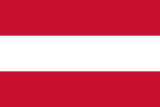Electoral system for national legislature

Austria
Austria, Parliament, Elections to the National Council, accessed 9 September 2019
“How are the votes counted and divided?
The election to the National Council is based on the principles of proportional representation. This means that the mandates are awarded to the individual voting parties according to the respective percentage of votes.
For the election of the 183 members of parliament, the federal territory is divided into a federal constituency (entire state territory) and nine constituencies (identical to the federal states). The latter are subdivided into a total of 39 regional constituencies. In the individual constituencies, only a certain number of mandates can be awarded. The basis for this is the last census.
The mandates or seats are divided in a three-stage process: first in the regional constituencies, then in the constituencies and finally at the federal level. The third method considers how many percent of the votes cast have been received by the individual parties nationwide. This is followed by a nationwide proportional equalization of the mandate distribution in the sense of this percentage.
For a party to be able to move into the National Council, it needs either a direct or a basic mandate in a constituency or nationwide a vote share of four percent.
Anyone who is actually allowed to sit in the National Council is guided by the electoral lists submitted by election-soliciting parties. However, voters can award a preferential vote. If a person on the list reaches enough preference votes, it will be ranked.”
Austria, Federal Law on National Council Elections (Regulations on National Council Elections 1992 – NRWO), last amended in 2018, accessed 9 September 2019
Details of the electoral system are provided in the Articles 79, 84, 86, 90, and 91.